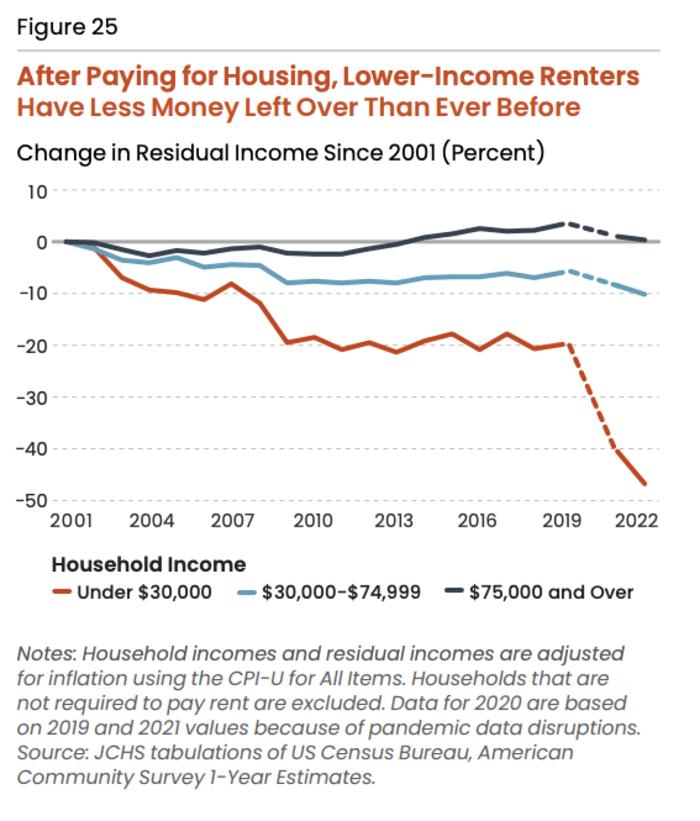[ad_1]
A sharp rise in rents over the past few years has left millions of tenants spending too much of their incomes on housing costs, pushing the share of so-called rent-burdened households to an all-time high, according to a new report.
In an annual report by the Joint Center for Housing Studies of Harvard University released Thursday, researchers found that in 2022 the number of renters in America who were spending more than 30% of their incomes on rent and utilities hit a record high of 22.4 million.
Housing is generally considered affordable if it costs no more than 30% of one’s gross income. People who spend more than that are known as “rent burdened” or “cost burdened.” Half of U.S. renters in 2022 were spending more than 30% of their incomes on rent and utilities, according to the Harvard joint center, up 3.2 percentage points from before the pandemic in 2019.
Among these renters, an all-time high of 12.1 million were severely “cost burdened,” the group said, spending more than half of their incomes on housing.
Even higher-income households were experiencing increased strain: Those households saw their burdened rate increase by 2.2 percentage points. Households with incomes of $75,000 or more are considered higher-income for Harvard’s calculations.
To be clear, rent increases, after rising nearly 20% between 2021 and 2022, have slowed significantly since 2022 as more apartments and houses are being built.
See: Renters and home buyers are getting some shelter from inflation
Also: It’s been years since consumers felt this good about where inflation could go next, N.Y. Fed says
But wages have not kept pace with rising rental costs, according to the Harvard center. “Though median rents have risen 21 percent in inflation-adjusted terms since 2001, median annual income has risen just 2 percent during the same period,” the researchers noted.
Lower-income renters making less than $30,000 a year saw their cost-burdened rate rise by 1.5 percentage points to 83%. About a third of renters had household incomes below $30,000 in 2022, and they had median cash savings of just $300 and median net wealth of $3,200, according to the Harvard report.
After paying rent, cost-burdened lower-income households have median residual income of just $170, the researchers found.
“Rent is the largest expense for most households and often takes priority because the consequences of not paying rent could include eviction and homelessness,” the Harvard researchers said.

Evictions are also on the rise, the center said, with homelessness rising to the highest level on record.
An all-time high of 653,100 people were homeless as of January 2023, according to the report. That’s up by nearly 71,000 people in one year’s time. In 2023 the total number of people experiencing homelessness in unsheltered locations reached an all-time high of 256,610, the report noted.
Since pandemic-era policies such as the eviction moratorium and rent relief ended, “the housing safety net is once again overwhelmed and underfunded,” Chris Herbert, managing director of the Joint Center for Housing Studies, said in a statement.
“And while states and localities have acted to fill some of the gaps, a larger commitment from the federal government is required to expand housing supports and preserve and improve the existing affordable stock,” Herbert said. “Only then will the nation finally make a meaningful dent in the housing-affordability crisis making life so difficult for millions of people.”
[ad_2]
Source link
